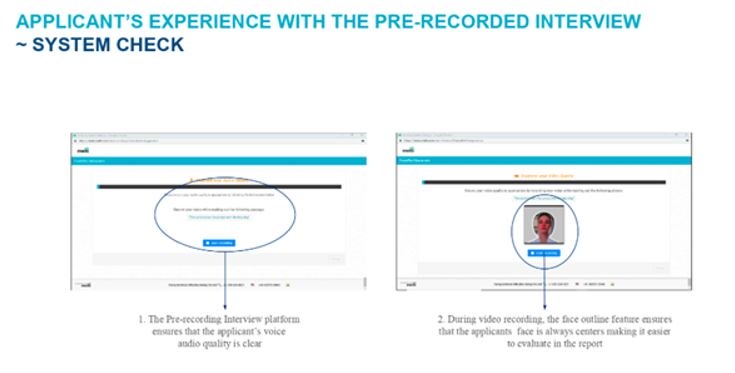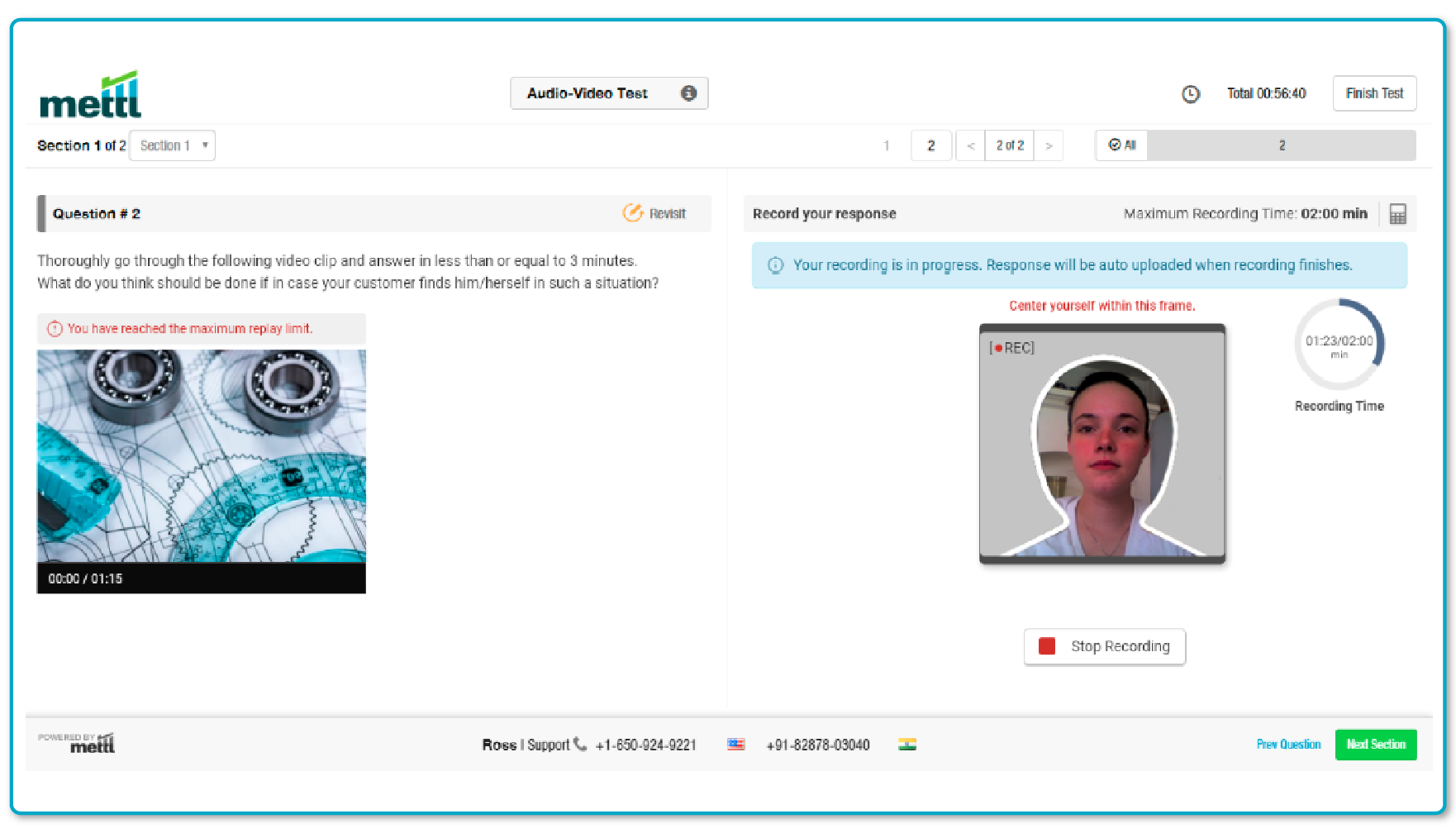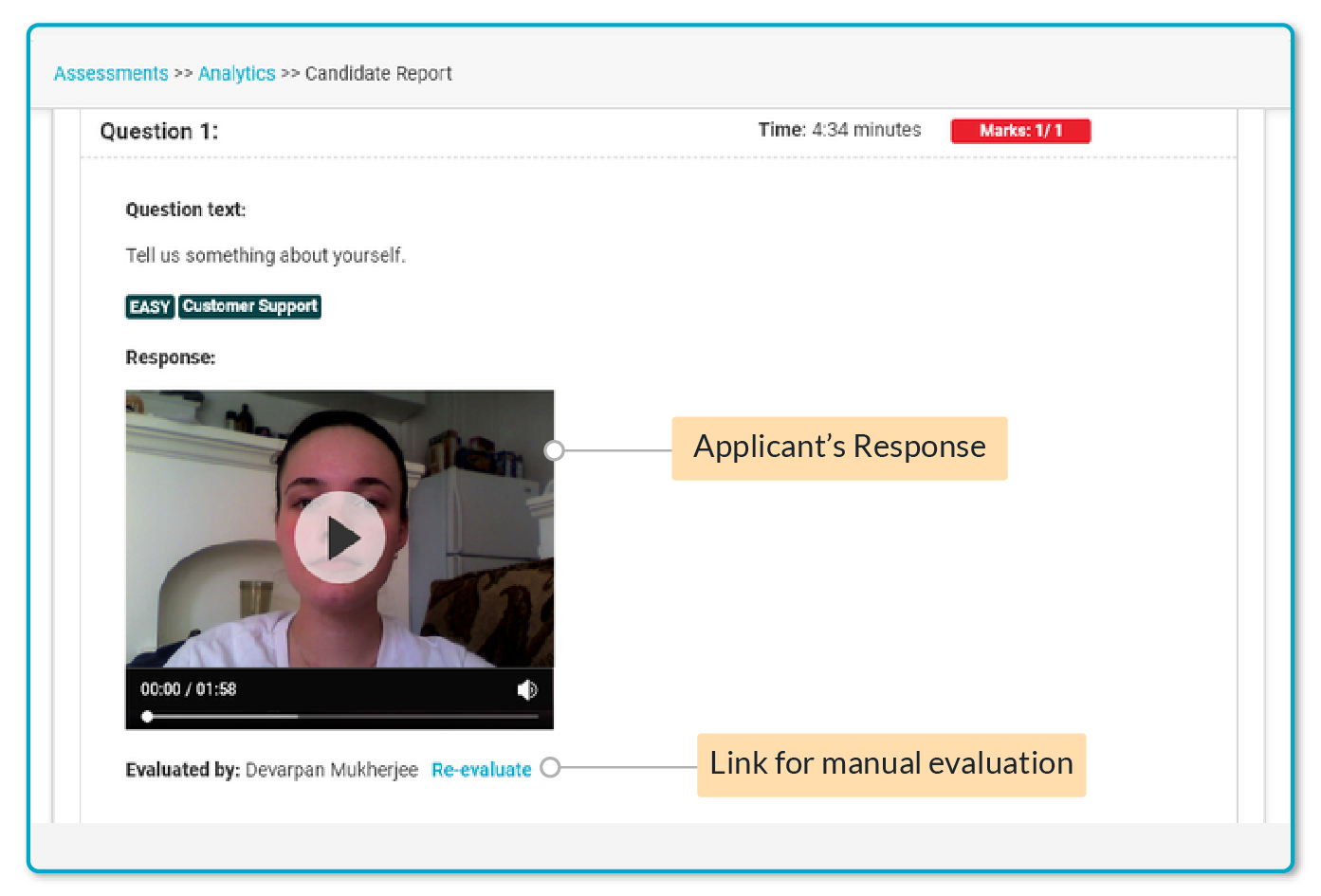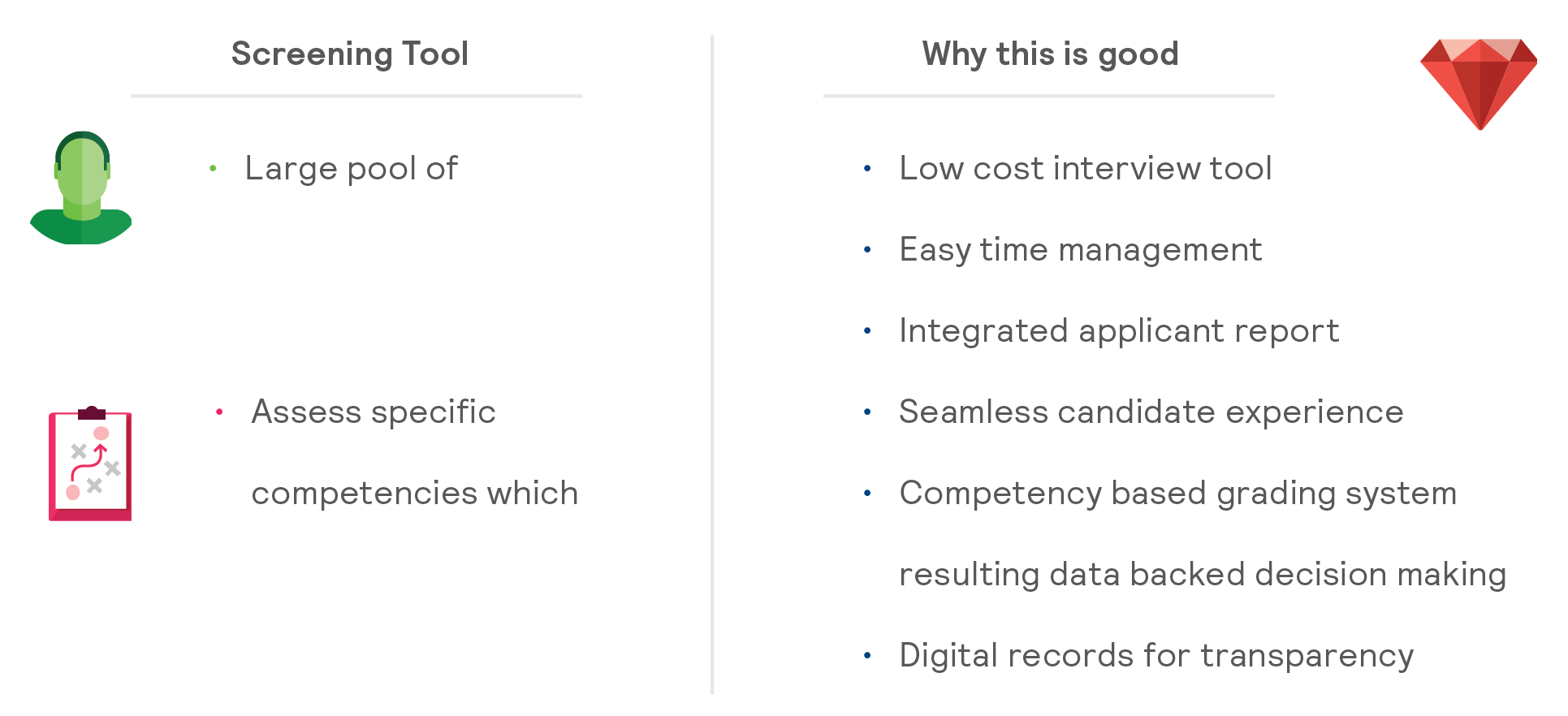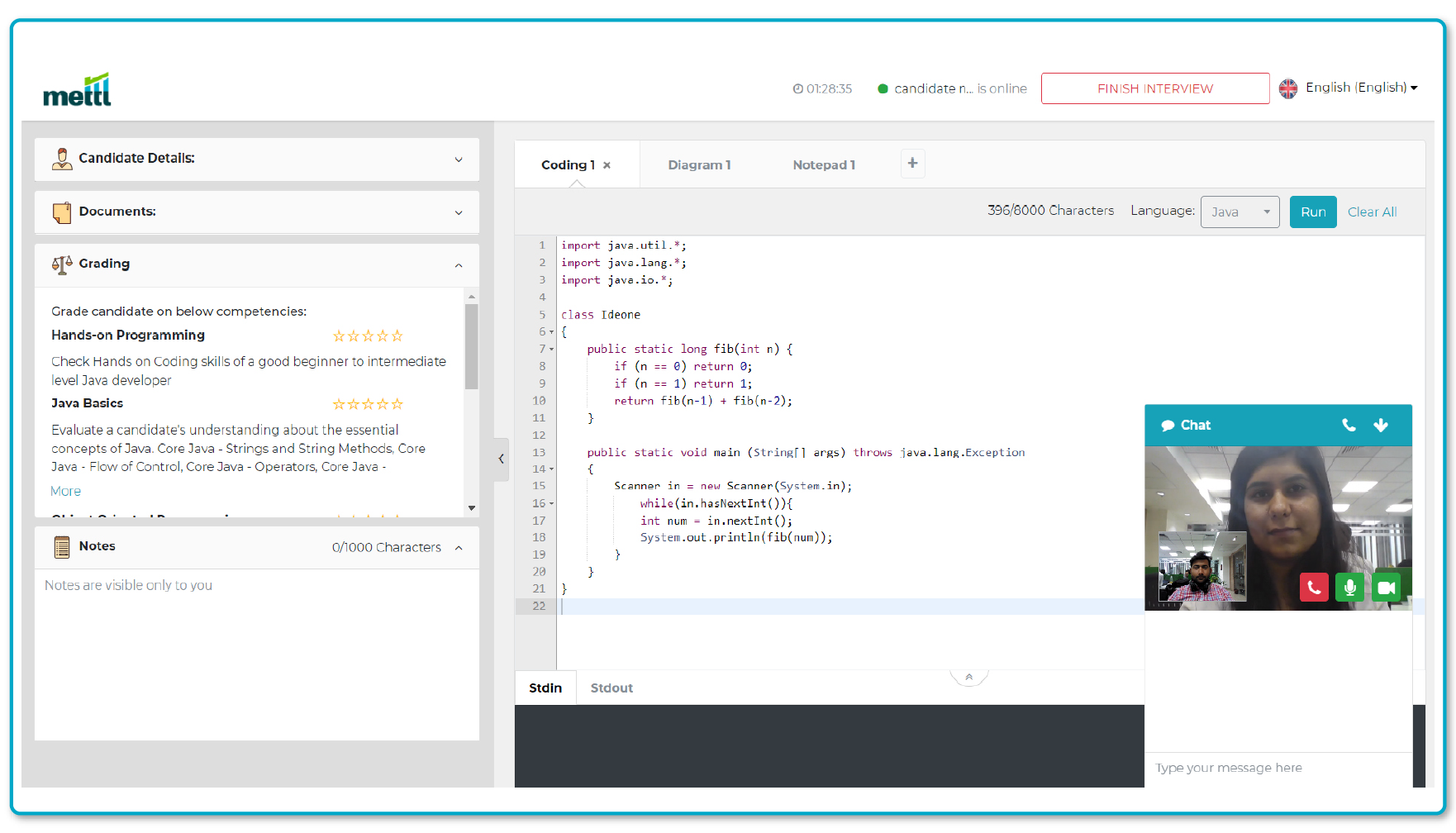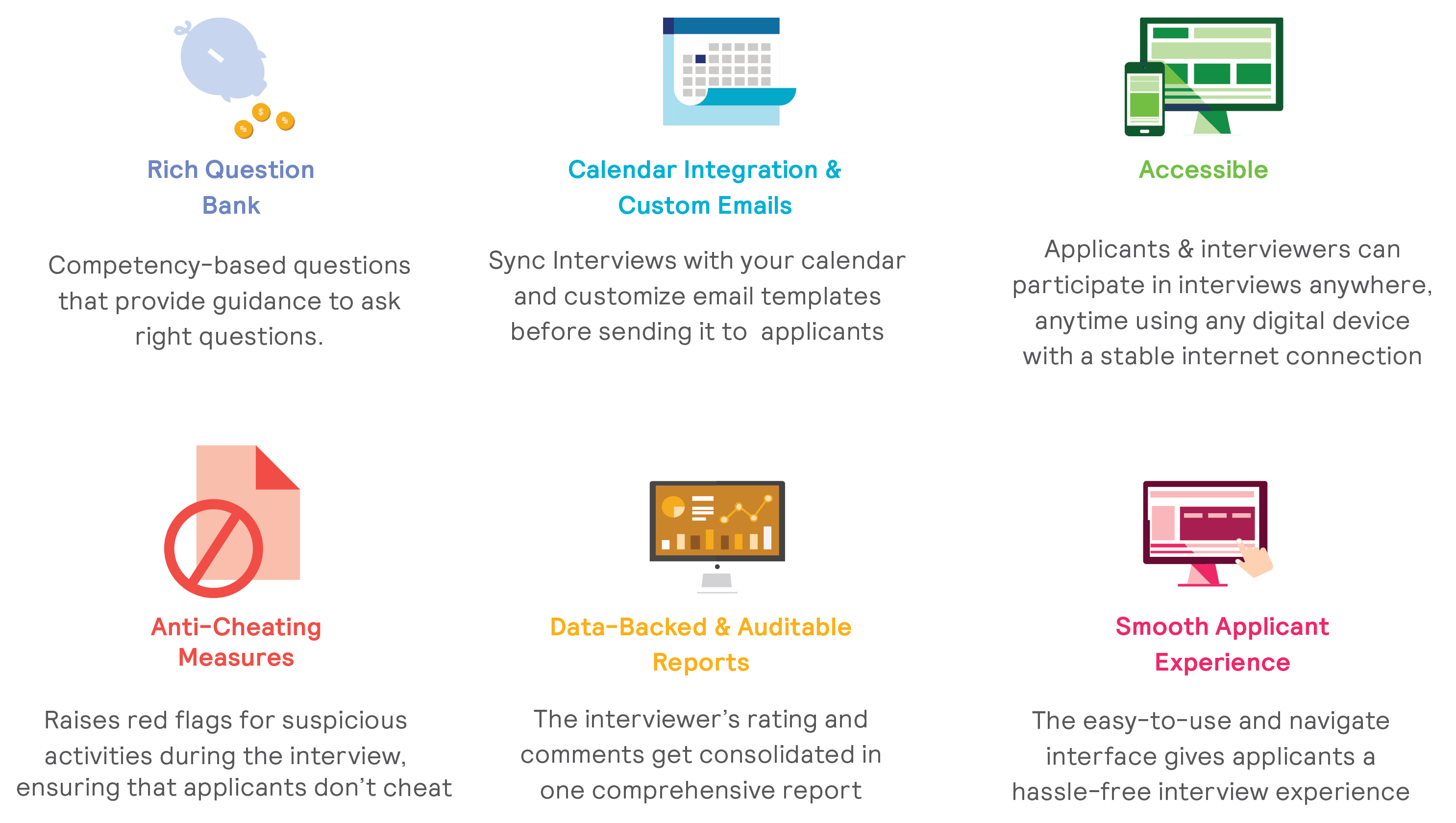A structured video interview tool is a standardized way of comparing job candidates where the hiring manager can remotely create and conduct interviews focused on the skills and abilities the company is seeking. The HR manager also creates a standardized scale for evaluating candidates according to which the interviewees are ranked. Since the questions are mapped to competencies, there is little chance for unfair or subjective assessment. With questions focused on specific skills, this interview style is often considered a more effective way of testing a candidate’s potential performance on the job. This interview format also allows employers to assess hard-to-measure skills, like interpersonal skills and oral communication. From hiring entry-level candidates to experienced professionals, video interviews are making it easier and more convenient for organizations. Online video interview platforms enable employers to more objectively evaluate a candidate’s skills and personality with the added advantage of AI enabled technologies and scaling.
Define Key Competencies
Defining competencies in the interviews can give valuable insights into an individual’s preferred style of working and helps to predict behavior in future situations. A competency-based interview question bank can make the interviewing process easier the next time a position needs to be filled. From time to time, HRs want to update interview questions to reflect the role and skills they need in the future. So, using key competencies serves as a benchmark to evaluate candidates against each other. When competencies are defined and implemented in the interview process, employers are able to identify applicants who will be able to fit into the company’s culture.
Data-Backed Insights
The final judgment call is completely data-driven, objective, easy, and fast to make as the video interview tool reduces the possibility of human bias. The competencies, their weightage, and related questions are already set-up by the hiring manager at the beginning of the interview process in consultation with the subject matter experts. So, when the interview is being conducted by multiple interviewers, they have some parameters to judge the candidate. This eliminates the gut-based evaluation for the interviewer becomes accountable for giving a certain score to a candidate. The scorecard records all the scores of the candidate and finally generates the consolidated reports, candidate performance, and rating on various competencies. Additionally, it informs the hiring manager about how the candidate will perform in the future by providing data-backed insights on the candidate’s learning agility to keep up with the ever-evolving skill demands and leadership attributes to grow and take care of future roles.
Time-Efficient Process
The preliminary phone interview takes an average of 30 minutes while the personal interviews tend to be longer as per the availability of various interviewers. The time is wasted if hiring managers realize a candidate won’t work out early on. This is where a pre-recorded video interview software can really shine for employers. Employers can watch candidates answer their tough questions wherever and whenever they want. Realize a candidate isn’t right for the position early on? Now you are not trapped either on phone or personal interview. Meanwhile, live video interviewing is great for far-flung and passive candidates. Now you can save 100 percent of your travel costs by just booting up your webcam. Plus, scheduling interviews with passive candidates can often be difficult. While you want the best candidates in front of you, they are oftentimes busy if they’re currently employed. Now both hiring managers and candidates can schedule a bonafide face-to-face interview without endless back and forth on scheduling. Video interview platforms can help you cut down on the traditional hiring process and save your company time and money. They are effective in the hiring process because they build a better bridge between weeding out resumes and meeting the candidate of your dreams.
Comprehensive Dashboard
An online video interview software has a job role dashboard that displays how many candidates completed the interview process for each job role vis-à-vis the job openings. It helps the hiring manager in making the decision call regarding which top candidates to finally select. This is important at times, as the number of candidates that have achieved grades above the set benchmark is less than the required openings. In which case, the top contenders among the available pool move to the next step, or another round of interview is carried out to fill the unfilled positions. The dashboard provides full access to the proficiency level and grade of candidates for each competency. This allows them to see how many candidates have scored past the benchmark and meet the skill demands and quality standards of the organization. It also indicates the hiring manager if the candidate is a good organizational fit in terms of stability, workplace behavior, and more.
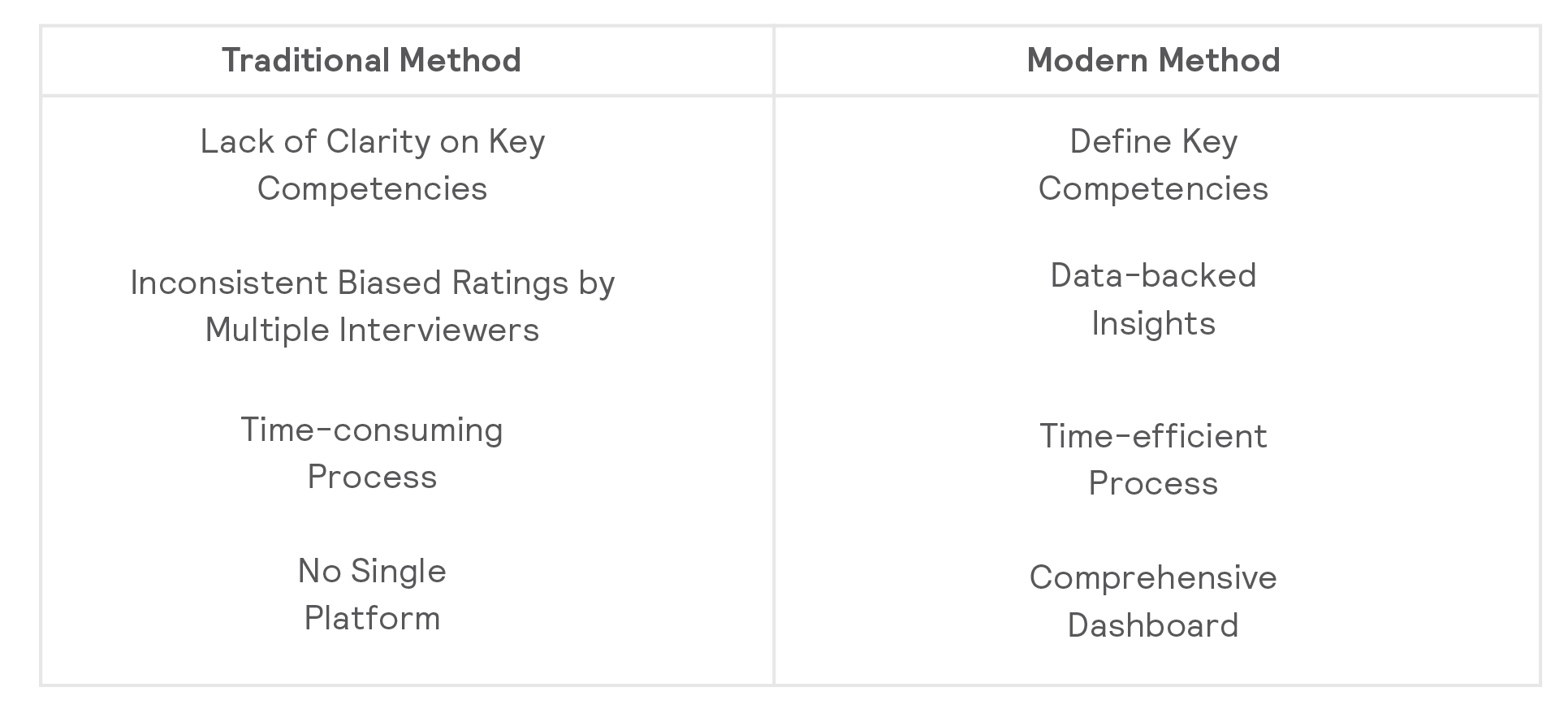









 Behavioral Competencies
Behavioral Competencies Cognitive Competencies
Cognitive Competencies Coding Competencies
Coding Competencies Domain Competencies
Domain Competencies
























